
Discover more at Lacock Abbey and the Fox Talbot Museum
Find out when Lacock Abbey and the Fox Talbot Museum are open, how to get here, the things to see and do and more.
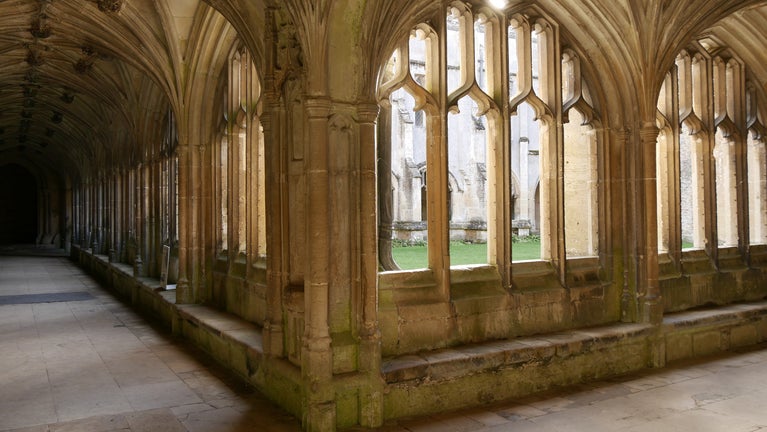
Lacock Abbey, Wiltshire, has an 800-year history. Starting as a convent in the 13th century, the abbey became a family home for the Sharington and Talbot families. In 1835, Lacock became renowned as the place where the first photographic negative was created.
In 1232, Ela, Countess of Salisbury (1187–1261), founded Lacock Abbey on land she owned as a Catholic convent. She became a nun and was made Abbess of Lacock in 1240.
Ela was one of the most powerful women of the age, she had served as Sheriff of Wiltshire which made her responsible for the rule of law as set out in the Magna Carta (1215). Her 1225 copy of the document was kept at Lacock until 1946 when it moved to the British Library.
Another remarkable manuscript survives in the collection. Made for the nuns at the abbey in about 1350, the ‘Expositiones Vocabulorum Biblie’ details difficult words in the Bible. It avoided destruction at the time of the dissolution of Catholic religious houses in the 16th century, and is the only example that has remained in the building it was made for. The cloister and associated rooms are a rare example of surviving medieval monastic architecture.

The abbey was shut down in 1539 on the orders of King Henry VIII after his break with the Roman Catholic Church. In 1540, the abbey was bought by Sir William Sharington (c.1495–1553) for £730. He came from a wealthy Norfolk family, and was a merchant and a master of the Bristol Mint which he confessed to defrauding. He made coins too light and minted more coins than ordered, keeping false records to fend off discovery.
Using his wealth, William transformed the buildings from a convent to a country house and demolished the church with chapel. From the materials, he built the octagonal tower on the corner of the abbey, in a style inspired by French and Italian Renaissance architecture.
William commissioned two distinctive stone tables to fit his new octagonal tower. One is the centrepiece of the tower’s middle storey, or Strong Room, shaped as an octagon to mirror the shape of the room, supported by four crouching satyrs (half-man, half-goat). The table provides a glimpse of the inventive style of fashionable Tudor interiors once at Lacock.
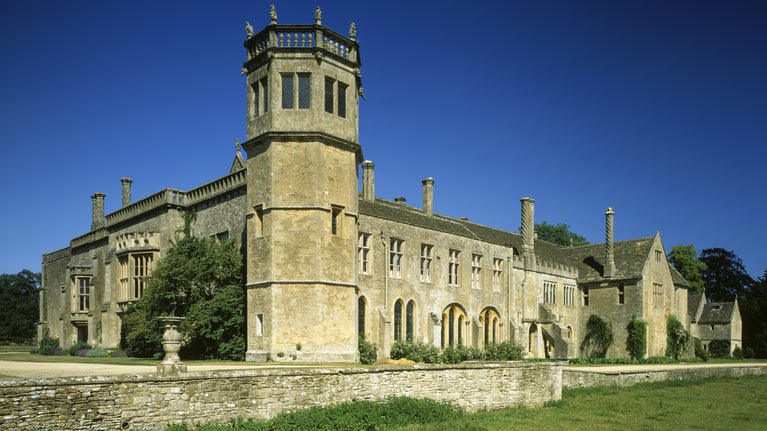
After William’s death Lacock was left to William’s brother Sir Henry Sharrington (c. 1518–81), who was a Member of Parliament for Ludgershall. In August 1574, Queen Elizabeth I stayed at the abbey for one week whilst on her royal progress of the west of her kingdom. It was customary for the host to present a gift to the Queen and Henry gave her a dolphin pendant, made of mother-of-pearl, gold, diamonds and rubies. The following month the queen knighted Henry.
Henry left Lacock Abbey to his daughter Olive Sharrington (c.1553–1646) whose first husband John Talbot of Salwarp (c. 1549–81), was a descendant of Ela, Lacock Abbey’s founder.
Olive and John’s grandson, John Ivory Talbot (c. 1691–1772), a landowner and politician, inherited Lacock in 1714. Over 58 years he transformed both the abbey and its garden. He was inspired by the Gothick style and employed architect Sanderson Miller to revive the medieval spirit of the convent by adding features such as the entrance arch in the grounds. He also added the classical proportioned dining room, and the dramatic Great Hall complete with sculptural carvings. Lacock passed to his daughter Martha (1722–90) who married William Davenport (1718–81), and in turn to their son William Davenport Talbot (1763–1800).
Henry Fox Talbot (1800–77) inherited Lacock from his father, when he was just five months old, but only lived there from 1827.
A pioneering scientist and keen mathematician, Henry is Lacock's most famous resident. It was his wife Constance Mundy (1811–80), that inspired Henry to pioneer photographic methods. He realized that her talent for art was far superior to his and began to develop a method to capture a view without draughtsmanship.
After some experiments, in 1835 Henry created a permanent image of a window at Lacock Abbey. This image, not much bigger than a postage stamp, is now celebrated as the world’s earliest surviving photographic negative. The window is in the South Gallery. From around 1839, Constance experimented with photographic processes herself, becoming one of the first women to do so.
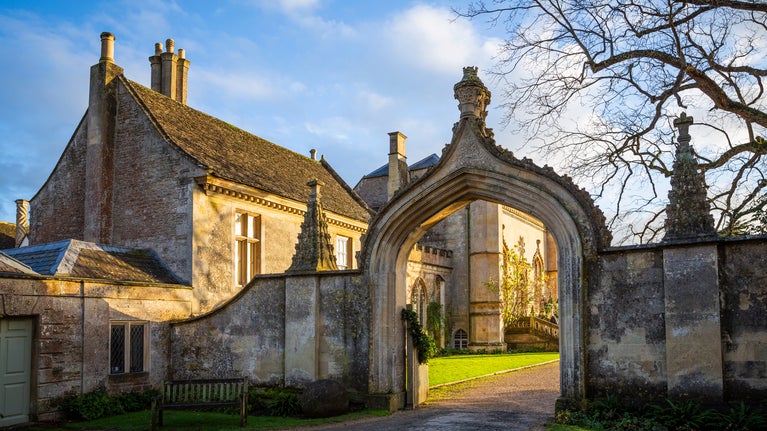
Constance and Henry’s eldest son Charles Henry Talbot (1877–1916) inherited Lacock. He commissioned architect Sir Harold Brakspear to restore the medieval parts of the Abbey and also repaired village buildings using traditional methods. Charles never married and left Lacock to his niece Matilda Theresa Gilchrist-Clark (1871-1958) who changed her surname to Talbot in his honour. Matilda was Henry Fox Talbot’s granddaughter.
Matilda was fascinated by the history of Lacock, and in 1932 she held a pageant to commemorate the 700th anniversary of the foundation of the abbey, posing as Ela, the Countess of Salisbury. She also founded the study of Henry Fox Talbot’s photography so that future generations could better understand the significance of her grandfather’s legacy.
She never married and chose to give Lacock to the care of the National Trust in 1944. In her memoirs, she expressed the hope that Lacock ‘may adapt itself to all the changes through which we are living, so as to preserve the spirit sympathetically enough to reach and touch contemporary thought’.
Lacock Abbey is now recognised as the international ‘Home of Photography’ with significant photographic collections of the Fox Talbot Museum cared for onsite. Recent collaborations with Magnum Photos, and a changing programme of exhibitions, ensure the creative and evolving story of photography is continually shared.
The abbey has featured in many films and television dramas, including Harry Potter (from 2002), Pride and Prejudice (1995) and Downton Abbey (2015 and 2018), making it familiar to millions of people across the world.
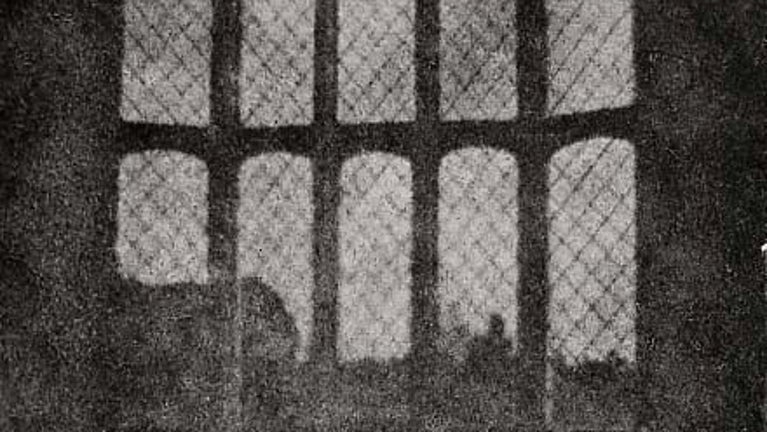

Find out when Lacock Abbey and the Fox Talbot Museum are open, how to get here, the things to see and do and more.
Learn about the history of photography at the Fox Talbot Museum, with a collection spanning photographic developments up to the present day.

Three prized items in the collection at Lacock have been included in a special National Trust publication. Discover why they are so unique and where you can find them.

Lacock Abbey's peaceful garden is a place to relax. Discover the Botanic Garden, greenhouse, orchard and woodland along with the sounds of nature at this green natural setting.
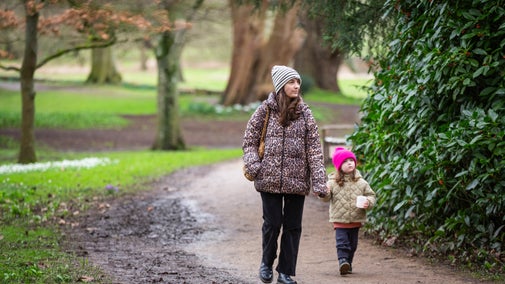
Explore the historic streets of Lacock, a quintessential English village with timber-framed cottages and local shops. With its central grid of four streets, Lacock today looks much as it did 200 years ago.

The Stables café and Courtyard Tea-rooms are ready to welcome you for refreshments, while the High Street Shop stocks a wide range of gifts and souvenirs.

Seasonal blooms, activity trails, medieval architecture and photographic discovery: have a fun-filled adventure at Lacock Abbey. Watch the gardens change with the seasons and autumn colour come to life in the Woodland, and discover the nature and enjoy crafts and trail activities in October half term. Explore the abbey rooms and discover the window with a unique link to the invention of photography, find out more in the Fox Talbot Museum and feel inspired by the latest exhibition.

Learn about people from the past, discover remarkable works of art and brush up on your knowledge of architecture and gardens.

Explore the objects and works of art we care for at Lacock on the National Trust Collections website.
